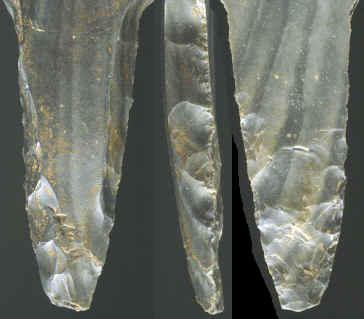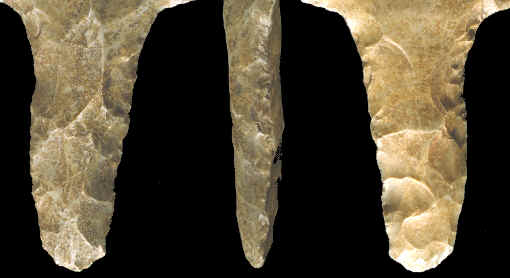|
|
|
Stemmed macro blades are found on Mayan sites in the lowlands of Belize, Guatemala and Mexico. They have been found around house mounds in domestic refuse heaps and in burials. So many of them were made that people are finding them in rivers, plowed fields and places where the ground has been eroded or disturbed. |
|
|
|
|
Stemmed macro blades were used for both domestic and ritual purposes. They were used as knives and it's believed they were used to tip the ends of thrusting spears. They were also used by the "elite" class in ritual caches and in burials. They have been found in ritual caches on the site of El Pozito in northern Belize. |
|
|
|
|
Stemmed macro blades are generally accepted to be at least 3 7/8 inches (10 cm) long or longer. This report illustrates one example that measures 15 5/8 inches (39.6 cm) long which represents the upper limit in size for these artifacts. |
|
|
|
|
The production of stone tools for weapons stopped in the Colha workshops around A.D. 1300. It was at this time that the bow and arrow began to be used in the Mayan lowlands. The arrows were tipped with tiny slivers of chert or obsidian. Production from the lithic workshops at Colha, Belize were closed down and Colha was abandoned. |
|
|
|
|
When the Maya "flintsmiths" walked away from their Colha chert quarries 800 years ago they left behind one of the worlds most unique and recognizable stone tools. So many stemmed macro blades were produced there, it would seem that everyone must have had one. "Mayan Daggers" were one of their most successful lithic inventions. |
|
|
"REFERENCES"
1965, Willey,
Gordon R., Bullard, William R., Glass, John B & Gifford, James C., "Prehistoric Maya Settlements in the Belize Valley,"
pp. 412, 416-418. |
|




